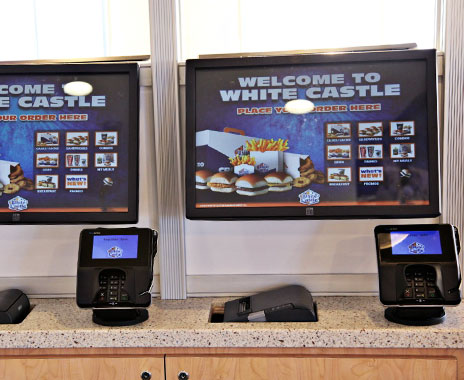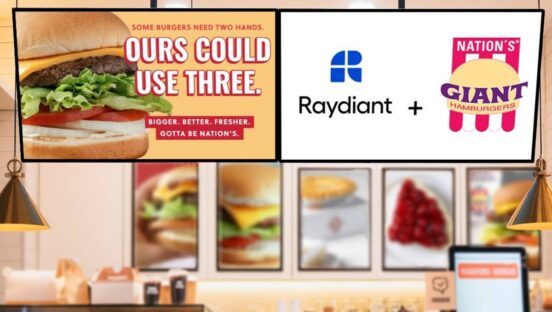Recent technology enhancements by White Castle and McDonald’s show that even traditional quick-service burger chains are considering letting patrons customize their orders.
Last month, White Castle added two touch-screen ordering kiosks at a renovated restaurant in its hometown of Columbus, Ohio. It is the only restaurant in the family-owned, 406-unit chain to feature the kiosks, which are part of a pilot project. The large screens allow customers to order their burgers exactly as they like them in the privacy of the kiosk area, says White Castle vice president Jamie Richardson.
“I don’t necessarily want to have 12 people around me when I am ordering. There is an intimacy and privacy about how we enjoy food,” Richardson says. “The kiosk system allows customers to tailor to their tastes—they can ask for more pickle or less onion, for example—in their own space.”
McDonald’s is testing a similar system at a store in Laguna Niguel, California. Customers there can order from iPads at every table, choosing from among more than 20 toppings and sauces to create custom-made burgers that are grilled to order. Company representatives, who did not respond to requests for comment for this story, told Technomic in December that the kiosk test will help McDonald’s gauge how customers feel about the customization experience.
Quick-service burger chains are following the rest of the restaurant industry’s lead, as several other concepts have jumped on the kiosk and tablet-ordering bandwagon. Both Chili’s and Applebee’s recently announced that they are adding tablets throughout their restaurants, allowing customers to order and pay at their tables.
“Younger customers are starting to expect more from brands, and kiosks are already popular in Europe and other countries. It also creates better efficiency between the customer and the back of the house, and reduces order errors,” says Darren Tristano, executive vice president of Technomic.
Burger quick serves’ increasing adoption of kiosks and tablets makes perfect sense in terms of reducing labor costs, enhancing customization, and standardizing menu information and marketing messages, says another industry analyst.
“It is really important in a franchise system to reduce errors,” says Aaron D. Allen, owner of consultancy firm Aaron Allen & Associates. “You can really customize digital menus and make changes [across all stores at the same time].”
Promotional messages can also be pushed out to customers with the click of button, Allen adds. In addition, tablets, kiosks, and other technologies ensure the customer receives good customer service.
“The service and upsells are already built in, as are the protocols of how the order should be taken,” Allen says. “A computer can be programmed to be cheerful and polite, whereas people just always aren’t.”
White Castle is using its kiosks as an adjunct to customer service, instead of reducing labor at the Columbus store. It has the same number of employees (40) as before the kiosk install.
“We are 100 percent reliable on our people to create a memorable experience. The kiosks free them up even more to provide that hospitality,” Richardson says. He adds that White Castle also added kiosks to make the order process more convenient for customers. “To us, it’s important to have that convenience that is important to you at home, in the airport, or in your car match the experience at White Castle,” he says.
Speeding up the ordering process is also a vital feature of tablet ordering, Allen says. “For [quick serves], their two main advantages are speed and convenience, plus the price is typically lower than casual dining,” he says. “When you drive by a busy McDonald’s and there is a line around the corner, immediately you think, ‘Is there another alternative so I won’t have to wait so long?’”
In addition to introducing tablet ordering to its customers for convenience purposes, McDonald’s is likely testing the customized burger to “satisfy the increasing demands of consumers for new flavor profiles,” Tristano says.
“They are trying to raise a greater awareness of their capabilities to customize,” he says. “We lose sight of the fact that you can always order a custom option at McDonald’s. Plus, they are competing with Burger King and its ‘Have it Your Way’ slogan.”
For its part, White Castle’s renovated Columbus store is showing off other customization features, such as an open kitchen format where staff prepare guests’ burgers in front of them and a Coca-Cola Freestyle fountain dispenser that lets customers mix and match sodas and other beverages.
Neither McDonald’s nor White Castle executives are saying whether kiosk and tablet ordering will be rolled out to additional stores.
“Whenever we try something new, we want as much learning as possible. That’s the process we are in right now,” Richardson says.









